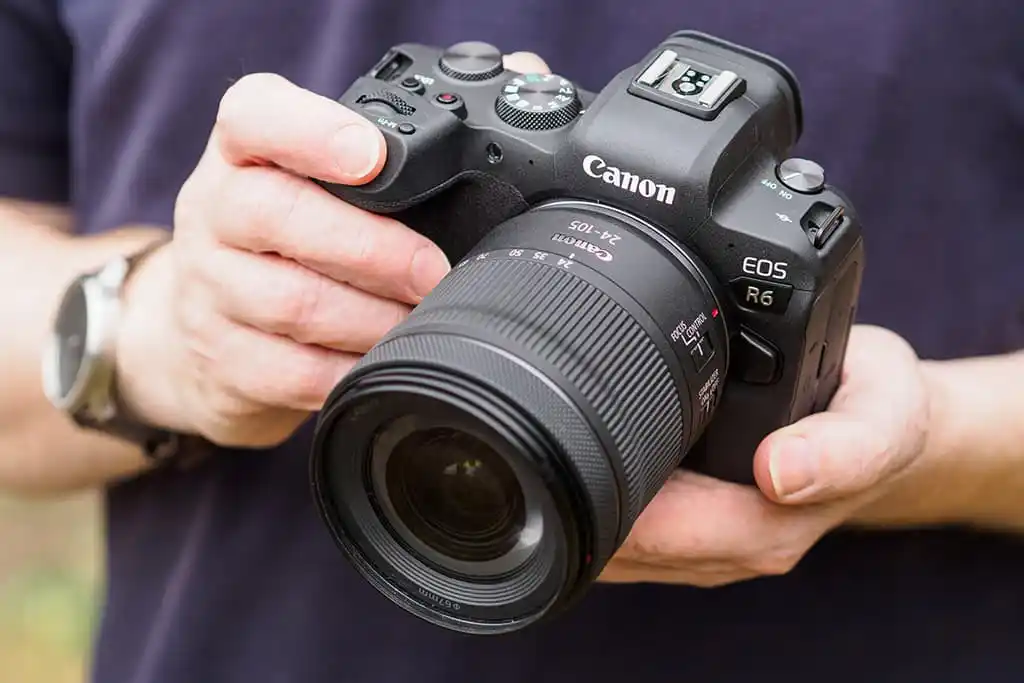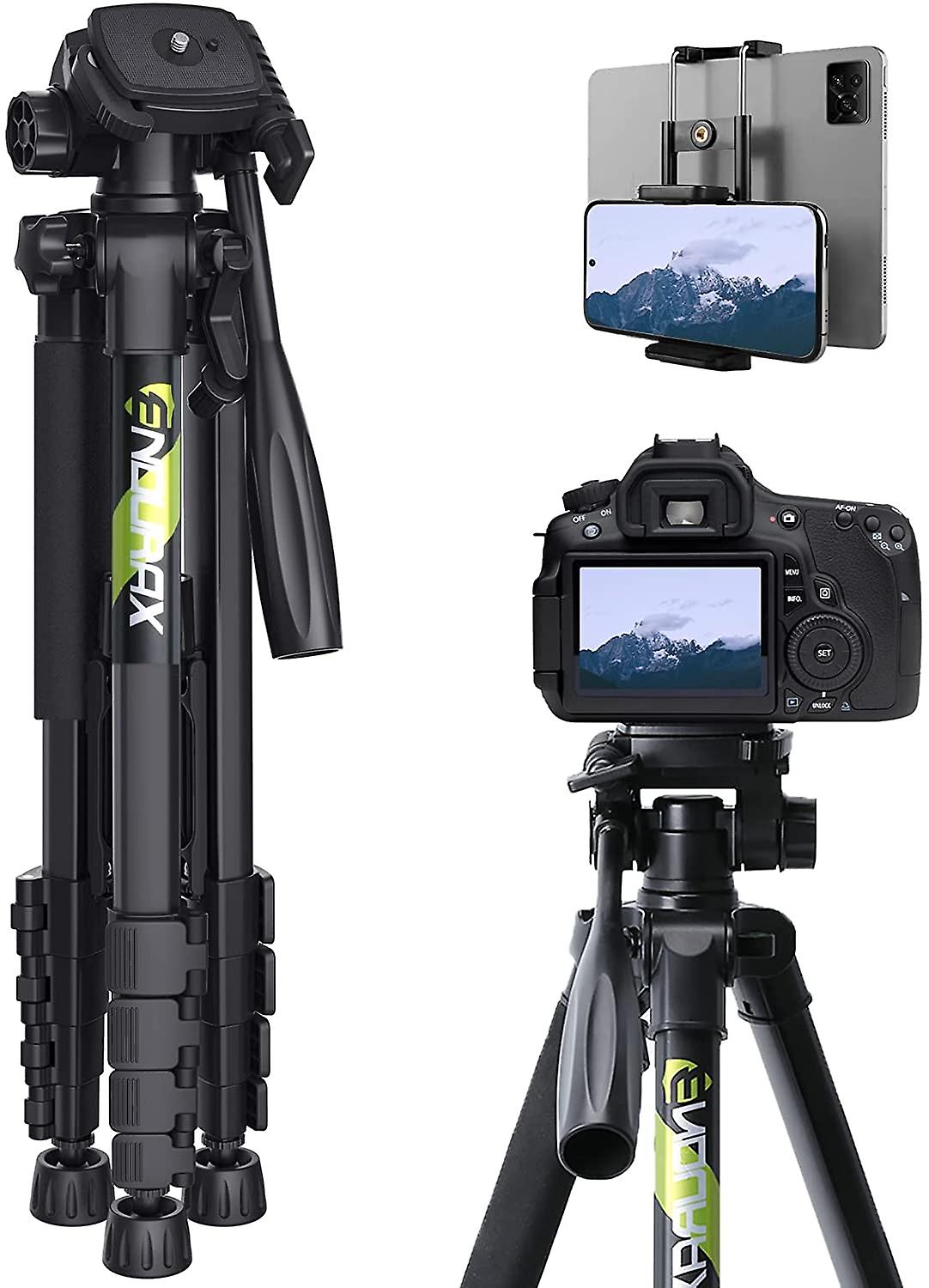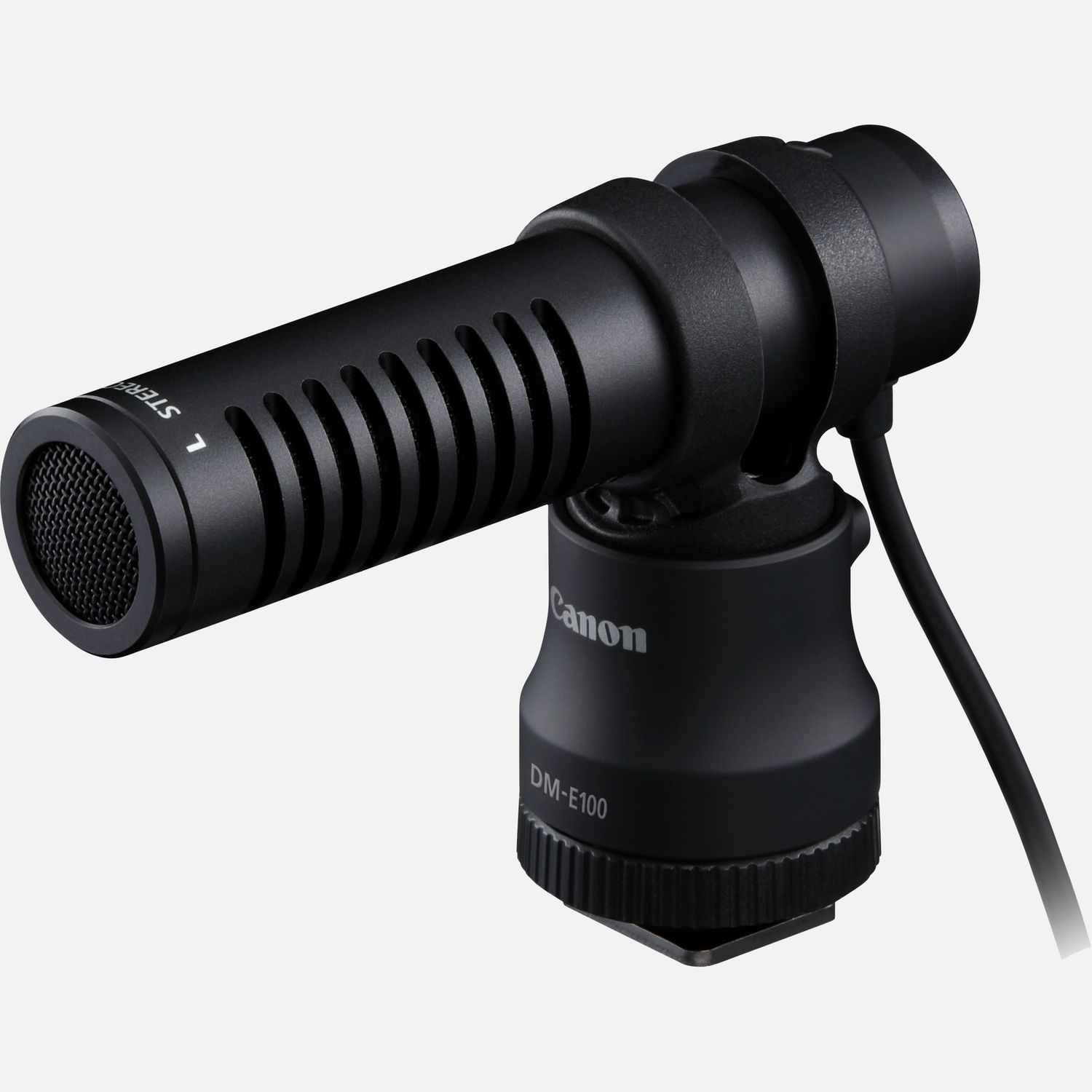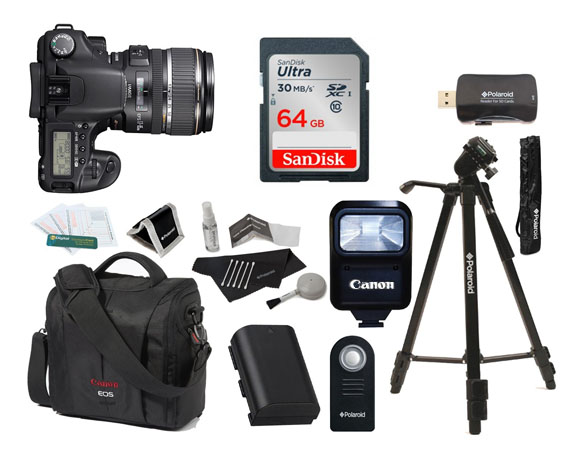Content creation with the Canon Content Creator Kit
Jul 17, 2023Are you an aspiring vlogger seeking to make a splash in the digital ocean, or perhaps a blossoming photographer, poised to capture life's fleeting moments in a frame? Maybe you're a professional content creator, aiming to scale the lofty heights of creativity? The answer to your varied needs lies within the compact yet powerful bundle of the Canon Content Creator Kit.
Imagine holding the tools that open the doors to a universe of unlimited creativity, packed into one versatile kit. This isn't just a collection of high-grade equipment, but a pathway to communicating your distinct narratives, connecting with your audience on a profound level.

With the Canon Content Creator Kit, you're not just creating content - you're crafting visual symphonies, playing the chords that resonate with your audience, weaving stories that linger. The stage is set for a new era of content creation that transcends traditional boundaries.
The Canon Content Creator Kit is more than just a technological marvel. It’s your partner in the exhilarating journey of content creation, shaping your ideas into tangible experiences. Strap in for an adventure into the realms of limitless creativity, because with the Canon Content Creator Kit, every frame is a tale waiting to unfurl. The future of content creation starts here, and it’s looking brighter than ever.
Table of Contents
Canon Content Creator Kit
Canon Camera
 (Image credits: Amateur photographer)
(Image credits: Amateur photographer)
A Canon camera refers to a digital camera manufactured by Canon Inc., a renowned Japanese company specializing in imaging and optical products. Canon cameras are widely recognized for their high-quality image capture, advanced features, and reliable performance.
They cater to a broad range of users, including professional photographers, enthusiasts, and casual shooters. Canon offers various camera models, including DSLRs (Digital Single Lens Reflex), mirrorless cameras, compact cameras, and specialty cameras designed for specific purposes like sports or wildlife photography. These cameras are known for their excellent image quality, extensive lens selection, user-friendly interfaces, and innovative technologies. These cameras are designed to help you capture your vision with precision and clarity.
Typical specifications of Canon Cameras:
- Megapixels: Canon cameras usually have a specified number of megapixels, which determines the level of detail in the images. Higher megapixels generally result in larger and more detailed images.
- Sensor Size: Canon cameras may have different sensor sizes, such as APS-C or full-frame sensors. The sensor size affects image quality, low-light performance, and depth of field control.
- ISO Range: Canon cameras have a range of ISO settings that determine their sensitivity to light. A wider ISO range allows for better performance in low-light conditions.
- Autofocus System: Canon cameras feature advanced autofocus systems that help capture sharp and focused images. These systems may include multiple focus points, face detection, and tracking capabilities.
- Image Stabilization: Canon cameras have built-in image stabilization technology, which reduces camera shake and allows for sharper handheld shots, especially in low-light situations.
- Continuous Shooting Speed: Canon cameras often offer a continuous shooting mode that allows you to capture a series of images in quick succession. The speed is measured in frames per second (fps) and varies between models.
- Viewfinder and Display: Canon cameras may have an optical viewfinder or an electronic viewfinder (EVF) for composing images. They also have an LCD screen for reviewing images and navigating menus.
- Connectivity: Canon cameras often include built-in Wi-Fi, NFC, or Bluetooth connectivity, allowing for wireless image transfer, remote control, and integration with mobile devices.
- Lens Mount: Canon cameras use different lens mounts, such as EF (for DSLRs) or RF (for mirrorless cameras). The lens mount determines the compatibility with Canon's extensive range of lenses.
These specifications can vary significantly between Canon camera models, so it's important to refer to the specific camera's documentation or website for detailed specifications.
Previously we had our review about Canon R5 for filmmakers like to start their journey, you may watch the video here:
Canon Lens
A Canon lens refers to the interchangeable lens system developed by Canon Inc. for their cameras. Canon offers a wide range of lenses that are compatible with their DSLR (Digital Single Lens Reflex) and mirrorless camera systems. Canon lenses are designed to be attached to the camera body and allow photographers to capture images with different focal lengths, perspectives, and optical characteristics.
 (Image credits: SLR Lounge)
(Image credits: SLR Lounge)
Canon lenses are known for their high optical quality, build durability, and wide selection. They cover various focal lengths, including wide-angle, standard, telephoto, and specialty lenses for specific purposes like macro or tilt-shift photography. Canon lenses are available with different maximum apertures, which affect the amount of light entering the lens and the depth of field control.
Typical specifications of Canon Lenses:
- Focal Length: Canon lenses have specific focal lengths, which determine the angle of view and magnification of the captured image. Lenses can have fixed focal lengths (prime lenses) or variable focal lengths (zoom lenses).
- Maximum Aperture: Canon lenses have a maximum aperture, which determines the amount of light that can enter the lens. A wider maximum aperture (represented by a lower f-number) allows for better low-light performance and depth of field control.
- Lens Mount: Canon lenses are designed to be compatible with Canon's lens mounts, such as EF (for DSLRs) or RF (for mirrorless cameras). The lens mount determines the physical connection between the lens and the camera body.
- Autofocus: Canon lenses typically include autofocus capabilities, allowing for quick and accurate focusing on the subject. The autofocus performance may vary between lenses.
- Lens Construction: Canon lenses are constructed using various lens elements arranged in different groups. The specific construction affects factors such as image quality, distortion control, and overall lens performance.
- Filter Thread Size: Canon lenses often have a filter thread size specified in millimeters (mm). This indicates the diameter of the lens front where filters, such as UV filters or circular polarizers, can be attached.
- Lens Designation: Canon lenses are identified by specific designations, such as L-series lenses (known for their professional-grade construction and image quality), STM lenses (optimized for smooth and quiet autofocus during video recording), or USM lenses (featuring Canon's ultrasonic motor for fast and silent autofocus).
- Dimensions and Weight: Canon lenses vary in size and weight, depending on their focal length, maximum aperture, and construction. These specifications can impact portability and handling comfort.
You may want to check our videos about camera lenses here as it might help you to cheese what lenses would fit your Filmmaking niche:
Tripod Stand
A Canon tripod is a tripod specifically designed or recommended by Canon to be used with their cameras and accessories. While Canon does not manufacture tripods themselves, they often collaborate with other tripod manufacturers to offer tripod options that are compatible with Canon cameras.
 (Image credits: Fruugo NL)
(Image credits: Fruugo NL)
Canon recognizes the importance of stable and steady support for their cameras during photography and videography, especially in situations where longer exposures or telephoto lenses are used.
Typical specifications of Canon Tripods:
- Maximum Load Capacity: The maximum load capacity indicates the amount of weight that the tripod can support. It is important to choose a tripod that can handle the weight of your camera and any additional accessories you might use.
- Minimum and Maximum Height: Tripods typically have an adjustable height range, allowing you to set them at different heights based on your shooting requirements. Consider both the minimum and maximum height to ensure the tripod meets your needs.
- Number of Leg Sections: Tripod legs are typically divided into sections that can be extended or collapsed. The number of leg sections affects the overall size and portability of the tripod.
- Material: Tripods can be made of various materials such as aluminum, carbon fiber, or a combination of both. Aluminum tripods are generally more affordable, while carbon fiber tripods offer lightweight construction and increased stability.
- Leg Locking Mechanism: Tripods feature different types of leg locking mechanisms, such as twist locks or flip locks. These mechanisms secure the legs in place when extended and allow for easy adjustment and folding.
- Head Type: The tripod head is where the camera is mounted and allows for adjustments in different directions. Canon tripods may come with various head types, such as ball heads, pan-tilt heads, or three-way heads. Consider the head type that suits your shooting style and needs.
- Weight and Portability: The weight of the tripod is an important factor, especially if you plan to carry it around for outdoor photography or travel. Lighter tripods are generally more portable but may sacrifice some stability.
Stereo Microphone
A Canon microphone is compatible with Canon cameras. It is designed to capture high-quality audio during video recording. Canon offers various microphone options that are specifically designed or recommended for use with their cameras.

(Image credits: Canon Store)
Canon recognizes the importance of audio quality in video production and provides microphone options to enhance the audio recording capabilities of their cameras. These microphones are typically mounted on the camera's hot shoe or connected to the camera's microphone input.
Typical specifications of Canon Microphones:
- Frequency Response: The frequency response indicates the range of frequencies that the microphone can capture. It is usually represented in Hertz (Hz) and describes the low and high frequencies that the microphone can reproduce.
- Directionality: Canon microphones has different directionality patterns, such as cardioid, super cardioid, or omnidirectional. The directionality determines the microphone's sensitivity to sound from different angles and impacts the microphone's ability to isolate the desired sound source.
- Sensitivity: The microphone sensitivity refers to its ability to capture sound and convert it into an electrical signal. It is usually measured in decibels (dB) and indicates how responsive the microphone is to sound.
- Signal-to-Noise Ratio (SNR): The signal-to-noise ratio measures the microphone's ability to capture the desired sound compared to unwanted background noise. A higher SNR indicates a cleaner audio signal with less noise.
- Power Source: Canon microphones may be powered by various methods, such as camera battery power, independent power sources like AA batteries, or phantom power provided by the camera or external audio recorder.
- Connectivity: Canon microphones typically connect to the camera's microphone input using standard audio connectors, such as a 3.5mm audio jack. Some microphones may offer additional connectivity options like XLR inputs for professional audio recording.
- Dimensions and Weight: The physical dimensions and weight of the microphone can impact its portability and ease of use.
Specific Canon microphone models may have additional features or specifications that are unique to each model. To obtain detailed and up-to-date specifications for a particular Canon microphone model, I recommend referring to the specific microphone's documentation or Canon's official website.
You may also like to check other microphones that are available in the market. If you're looking for more information about microphones specifically for YouTube filmmaking, we have a dedicated blog post on our website. Explore our blog to discover the best microphones for YouTube filmmaking here. Learn about top microphone options to enhance your audio recording quality and take your YouTube videos to the next level.
Accessories

(Image credits: Canon Camera Geek)
Canon offers a wide range of accessories to complement their cameras and enhance the photography or videography experience. These accessories are designed to work seamlessly with Canon cameras and provide additional functionality, convenience, or creative options.
These are just a few examples of the many accessories available from Canon. The specific accessories you might choose will depend on your shooting style, preferences, and specific needs. It's always a good idea to consult Canon's official website or authorized retailers for a complete list of Canon accessories and to ensure compatibility with your specific camera model.
Canon accessories you might consider:
- Lenses: Canon has an extensive lineup of lenses with different focal lengths, apertures, and features. Investing in additional lenses allows you to expand your creative possibilities and achieve different perspectives or shooting styles.
- Speedlites/External Flashes: Canon Speedlites are external flash units that provide additional light for better exposure in low-light conditions or to achieve creative lighting effects. They offer more power and versatility compared to the built-in camera flash.
- Battery Grips: Battery grips are accessories that attach to the camera body and provide an additional battery slot, allowing for extended shooting time. They also provide a more comfortable grip for vertical shooting and may offer additional controls.
- Remote Shutter Release: A remote shutter release enables you to trigger the camera shutter without physically touching the camera. This can be useful for minimizing camera shake during long exposures, self-portraits, or group shots.
- Camera Bags and Cases: Canon offers various camera bags and cases to protect your equipment and provide convenient storage and transportation. They come in different sizes and designs to accommodate your camera body, lenses, and other accessories.
- Memory Cards: Canon cameras typically use SD or CFast memory cards for storage. Having additional memory cards allows for extended shooting time and ensures you have enough storage capacity for your images and videos.
- Filters: Canon offers a range of filters, such as UV filters, circular polarizers, and neutral density filters. These filters can protect your lens, reduce reflections, control light intensity, and enhance your images.
- Battery Chargers and Spare Batteries: Having spare batteries and a reliable battery charger ensures you have sufficient power for extended shooting sessions and allows you to quickly recharge depleted batteries.
In a world driven by content, having the right tools is key. The Canon Content Creator Kit is a complete package, offering quality, versatility, and convenience.
It's not just an investment in equipment, but an investment in your creativity and passion. Start your content creation journey with Canon today!
In conclusion, the Canon Content Creator Kit offers aspiring vloggers, photographers, and content creators a comprehensive package of powerful tools to unleash their creative potential. This versatile kit combines high-quality Canon cameras and lenses with essential accessories, such as a tripod stand and stereo microphone, providing everything needed to capture stunning visuals and immersive audio.
Whether you're a beginner learning the ropes or an experienced content creator pushing the boundaries of your creativity, the Canon Content Creator Kit is a valuable investment. It empowers you to tell compelling stories, connect with your audience, and unlock a universe of limitless creativity. Step into the future of content creation with Canon, where every frame becomes a tale waiting to unfold.
FAQs
What type of camera is included in the Canon Content Creator Kit?
The Canon Content Creator Kit may include different camera models depending on the specific kit. Canon offers kits with a range of cameras, including DSLRs and mirrorless cameras, to cater to different needs and budgets.
Can I purchase individual items from the Canon Content Creator Kit separately?
Yes, you can purchase individual items from the Canon Content Creator Kit separately. However, it's worth considering that buying the complete kit is often more cost-effective, as it offers a bundled package with essential components.
Is the Canon Content Creator Kit suitable for beginners?
Absolutely! The Canon Content Creator Kit is designed to be user-friendly and is suitable for beginners. Canon cameras feature intuitive interfaces and offer helpful resources and tutorials to assist beginners in learning and using the equipment effectively.
Where can I learn to use the Canon Content Creator Kit effectively?
Canon provides various resources to help you learn and use the Canon Content Creator Kit effectively. You can find tips, tutorials, and guides on Canon's official website and YouTube channel. These resources cover a wide range of topics, from camera basics to advanced shooting techniques, ensuring you can make the most of your kit.
Are the components of the Canon Content Creator Kit durable?
Yes, all the components of the Canon Content Creator Kit are designed to be durable and built to withstand regular use. Canon is known for its commitment to quality, and the kit's components are no exception, ensuring longevity and reliability in your content creation journey.


